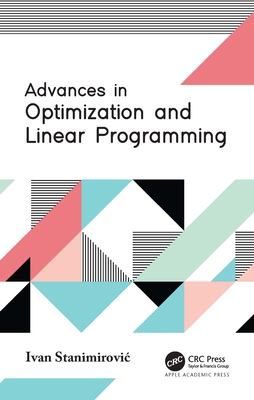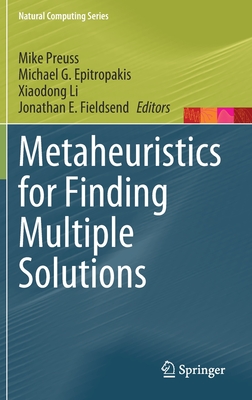Evolutionary Multi-Objective System Design: Theory and Applications (Chapman & Hall/CRC Computer and Information Science Series)
暫譯: 進化多目標系統設計:理論與應用 (Chapman & Hall/CRC 電腦與資訊科學系列)
- 出版商: Chapman and Hall/CRC
- 出版日期: 2017-10-19
- 售價: $6,950
- 貴賓價: 9.5 折 $6,603
- 語言: 英文
- 頁數: 242
- 裝訂: Hardcover
- ISBN: 1498780288
- ISBN-13: 9781498780285
-
相關分類:
工程數學 Engineering-mathematics
海外代購書籍(需單獨結帳)
相關主題
商品描述
Real-world engineering problems often require concurrent optimization of several design objectives, which are conflicting in cases. This type of optimization is generally called multi-objective or multi-criterion optimization. The area of research that applies evolutionary methodologies to multi-objective optimization is of special and growing interest. It brings a viable computational solution to many real-world problems.
Generally, multi-objective engineering problems do not have a straightforward optimal design. These kinds of problems usually inspire several solutions of equal efficiency, which achieve different trade-offs. Decision makers’ preferences are normally used to select the most adequate design. Such preferences may be dictated before or after the optimization takes place. They may also be introduced interactively at different levels of the optimization process. Multi-objective optimization methods can be subdivided into classical and evolutionary. The classical methods usually aim at a single solution while the evolutionary methods provide a whole set of so-called Pareto-optimal solutions.
Evolutionary Multi-Objective System Design: Theory and Applications
provides a representation of the state-of-the-art in evolutionary multi-objective optimization research area and related new trends. It reports many innovative designs yielded by the application of such optimization methods. It also presents the application of multi-objective optimization to the following problems:
- Embrittlement of stainless steel coated electrodes
- Learning fuzzy rules from imbalanced datasets
- Combining multi-objective evolutionary algorithms with collective intelligence
- Fuzzy gain scheduling control
- Smart placement of roadside units in vehicular networks
- Combining multi-objective evolutionary algorithms with quasi-simplex local search
- Design of robust substitution boxes
- Protein structure prediction problem
- Core assignment for efficient network-on-chip-based system design
商品描述(中文翻譯)
實際工程問題通常需要同時優化幾個設計目標,而這些目標在某些情況下是相互衝突的。這種優化通常稱為多目標或多準則優化。將進化方法應用於多目標優化的研究領域特別受到關注,並且正在不斷增長。它為許多現實世界的問題提供了一種可行的計算解決方案。
一般來說,多目標工程問題並沒有明確的最佳設計。這類問題通常會激發出幾個效率相等的解決方案,這些方案實現了不同的權衡。決策者的偏好通常用來選擇最合適的設計。這些偏好可能在優化之前或之後確定,也可能在優化過程的不同階段以互動方式引入。多目標優化方法可以分為經典方法和進化方法。經典方法通常旨在尋求單一解決方案,而進化方法則提供一整套所謂的帕累托最優解。
《進化多目標系統設計:理論與應用》提供了進化多目標優化研究領域及相關新趨勢的最新狀態的表現。它報告了許多通過應用這些優化方法所產生的創新設計。它還展示了多目標優化在以下問題中的應用:
- 不銹鋼塗層電極的脆化
- 從不平衡數據集中學習模糊規則
- 將多目標進化算法與集體智慧相結合
- 模糊增益調度控制
- 在車輛網絡中智能放置路邊單元
- 將多目標進化算法與準單純形局部搜索相結合
- 堅固替代盒的設計
- 蛋白質結構預測問題
- 用於高效片上網絡系統設計的核心分配
































